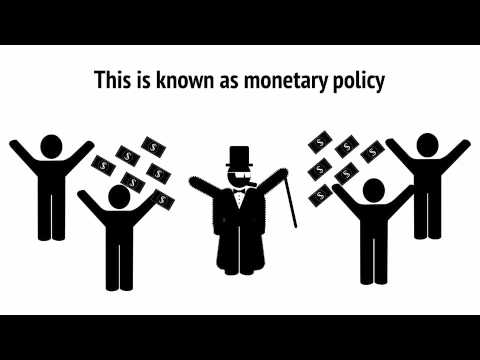
Average maturity, Macaulay duration, and modified duration can all provide useful information on the interest rate sensitivity of a debt fund. You should have a thorough understanding of these values to maximize your returns while minimizing overall risk to your portfolio. In simple terms, if a bond’s modified duration is 4 years and the market interest rate falls by 1%, the bond’s price rises by 4%.
- Our goal is to deliver the most understandable and comprehensive explanations of financial topics using simple writing complemented by helpful graphics and animation videos.
- For example, if a bond has a modified duration of 5, and interest rates move up by 1%, the bond’s yield will increase by 5%.
- During times when interest rates are rising, rising durations may point the way toward shorter-duration bonds that have less interest rate risk.
- For example, if rates were to rise 1%, a bond or bond fund with a five-year average duration would likely lose approximately 5% of its value.
- While you don’t need to calculate the Macaulay duration for your debt funds because it’s available on the debt fund factsheet, you should be aware that a longer Macaulay duration signals more interest rate sensitivity.
That is, a component that is linear in the interest rate changes plus an error term which is at least quadratic. This formula can be used to calculate the VaR of the portfolio by ignoring higher order terms. Quadratic terms, when included, can be expressed in terms of (multi-variate) bond convexity. The formula can also be used to calculate the DV01 of the portfolio (cf. below) and it can be generalized to include risk factors beyond interest rates. However, it is not necessary if you already know the YTM for the bond and its current price.
All other things being equal, a bond with a longer time to maturity will have a higher modified duration than a bond with a shorter time to maturity. Modified duration also plays a critical role in evaluating bond performance. By comparing the modified duration of a bond or bond portfolio to its benchmark, investors can assess whether they are achieving their investment objectives. Investors can use modified duration to adjust the maturity of their bond portfolio in order to better match their risk tolerance and investment objectives. This means that the modified duration of a bond can help investors predict how the bond’s price will change as interest rates fluctuate.
Ask a Financial Professional Any Question
In contrast, if the market interest rate rises by 1%, the price of the same bond falls by 4%. The average effective maturity is the length to maturity of fixed income investments, calculated by taking the average length by weighting in a portfolio. Weighting is simply the proportion that a particular investment takes up in a portfolio according to its value. Indicated below is an example of various maturity dates but with different weightings, in a fictional portfolio, to show how we calculate average effective maturity. Yes, modified duration can be negative for bonds with cash flows that increase as interest rates rise. In this case, the bond’s price would actually increase as interest rates rise, and the modified duration would be negative.

The coupon rate of a bond is another factor that can affect its modified duration. Bonds with higher coupon rates typically have lower modified durations than bonds with lower coupon rates. Modified duration is useful to investors because it can help them determine how much the price of a bond will change if interest rates move by a certain amount. For example, if a bond has a modified duration of 5, and interest rates move up by 1%, the bond’s price will decrease by 5%. Duration is important for investors because it can help them understand how their bond holdings will react to changes in interest rates over a specific period of time. For example, if an investor owns a bond with a duration of 12, they can expect the bond’s price to decrease by 12% if interest rates increase by 1%.
By future cash flows of the bond, we are considering all payments made by the bond issuers to the investor (including coupon and maturity payments). Macaulay duration will be between zero years up to however many years until the bond’s maturity. It is calculated by first discounting all future cash flows to their present value. Each discounted cash flow is multiplied by the period number in which it is expected to be paid out.
Understanding bond duration
The bottom line is that you don’t have to shy away from using modified duration because of its complexity. There are plenty of options available to simplify the calculations for determining how interest rate changes might affect your investments. However, the formula can also be used with other financial instruments that are sensitive to interest rate changes, including mortgage-backed securities and preferred stocks. Modified duration is an unfamiliar term for many investors, but the underlying idea probably isn’t. The valuation of securities, particularly bonds, changes as interest rates change.

In general, for every 1% increase or decrease in interest rates, a bond’s price will change approximately 1% in the opposite direction for every year of duration. Duration is used to determine the price volatility of a bond or other fixed-income security when there is a change in interest rates. Learn about the different ways that duration is calculated, and what it can tell you about your portfolio. In simple terms, modified duration gives an idea of how the price of a bond will be affected should interest rates change. Duration is quoted as the percentage change in price for each given percent change in interest rates. For example, the price of a bond with a duration of 2 would be expected to increase (decline) by about 2.00% for each 1.00% move down (up) in rates.
Difference between average maturity, Macaulay’s duration, and modified duration
Typically, the higher the duration of the fund, the greater the sensitivity to interest rate changes. Mutual fund investments are subject to market risks, read all scheme related documents carefully. Maintaining independence and editorial freedom is essential to our mission of empowering modified duration meaning investor success. We provide a platform for our authors to report on investments fairly, accurately, and from the investor’s point of view. We also respect individual opinions––they represent the unvarnished thinking of our people and exacting analysis of our research processes.
How Long Does Night Last Minecraft – J Station X – J Station X
How Long Does Night Last Minecraft – J Station X.
Posted: Wed, 09 Aug 2023 03:30:56 GMT [source]
Convexity, another measure of bond price sensitivity, accounts for this nonlinearity and provides a more accurate estimate of bond price changes for larger yield fluctuations. MD is important for investors because it can help them understand how their bond holdings will react to changes in interest rates. For example, if an investor owns a bond with a modified duration of 2, they can expect the bond’s price to decrease by 2% if interest rates increase by 1%. Conversely, if an investor owns a bond with a modified duration of 0.5, they can expect the bond’s price to decrease by 0.5% if interest rates increase by 1%. Dollar duration measures the dollar change in a bond’s value to a change in the market interest rate, providing a straightforward dollar-amount computation given a 1% change in rates.
Risk – duration as interest rate sensitivity
However, a bond’s term is a linear measure of the years until repayment of principal is due; it does not change with the interest rate environment. Duration, on the other hand, is nonlinear and accelerates as the time to maturity lessens. A bond’s duration is easily confused with its term or time to maturity because certain types of duration measurements are also calculated in years. Duration predicts how sharply the price of a bond will change as a result of changes in interest rates. When interest rates rise, a bond’s price will fall by an amount almost equal to the change in interest rate times the duration of the bond.

Conversely, if an investor owns a bond with a duration of 2, they can expect the bond’s price to decrease by 2% if interest rates increase by 1%. This is because the issuer can redeem the old bond at a high coupon and re-issue a new bond at a lower rate, thus providing the issuer with valuable optionality. Similar to the above, in these cases, it may be more correct to calculate an effective convexity. As a bond’s duration rises, its interest rate risk also rises because the impact of a change in the interest rate environment is larger than it would be for a bond with a smaller duration. Fixed-income traders will use duration, along with convexity, to manage the riskiness of their portfolio and to make adjustments to it.
This is true because, by definition, the current price of a bond is the present value of all its cash flows. The lower a bond’s coupon rate, the longer the bond’s duration will be because less payment is received before the maturity date. The higher a bond’s coupon rate, the shorter the bond’s duration will be because more payment is received before the maturity date.
Effective duration is a duration calculation for bonds that have embedded options. This result shows that it takes 2.753 years to recoup the true cost of the bond. More than one type of option may be embedded into a bond so long as they are not mutually exclusive. Securities other than bonds that may have embedded options include senior equity, convertible preferred stock, and exchangeable preferred stock. They are, nevertheless, influenced by interest rate cycles depending on their duration.
What is modified duration?
Our authors can publish views that we may or may not agree with, but they show their work, distinguish facts from opinions, and make sure their analysis is clear and in no way misleading or deceptive. Modified duration is used to manage interest rate risk through strategies like portfolio immunization and asset-liability management. All other things being equal, a bond with a higher yield will have a lower modified duration than a bond with a lower yield. Conversely, if interest rates were to fall by 1%, the price of the bond would be expected to increase by approximately 5%.
- The higher a bond’s coupon rate, the shorter the bond’s duration will be because more payment is received before the maturity date.
- A bond is said to have positive convexity if duration rises as the yield declines.
- If interest rates were to rise by 1%, the price of the bond would be expected to decline by approximately 5%.
- He is a CFA charterholder as well as holding FINRA Series 7, 55 & 63 licenses.
Transparency is how we protect the integrity of our work and keep empowering investors to achieve their goals and dreams. And we have unwavering standards for how we keep that integrity intact, from our research and data to our policies on content and your personal data. Our writing and editorial staff are a team of experts holding advanced financial designations and have written for most major financial media publications. Our work has been directly cited by organizations including Entrepreneur, Business Insider, Investopedia, Forbes, CNBC, and many others. Our goal is to deliver the most understandable and comprehensive explanations of financial topics using simple writing complemented by helpful graphics and animation videos. Finance Strategists is a leading financial literacy non-profit organization priding itself on providing accurate and reliable financial information to millions of readers each year.
